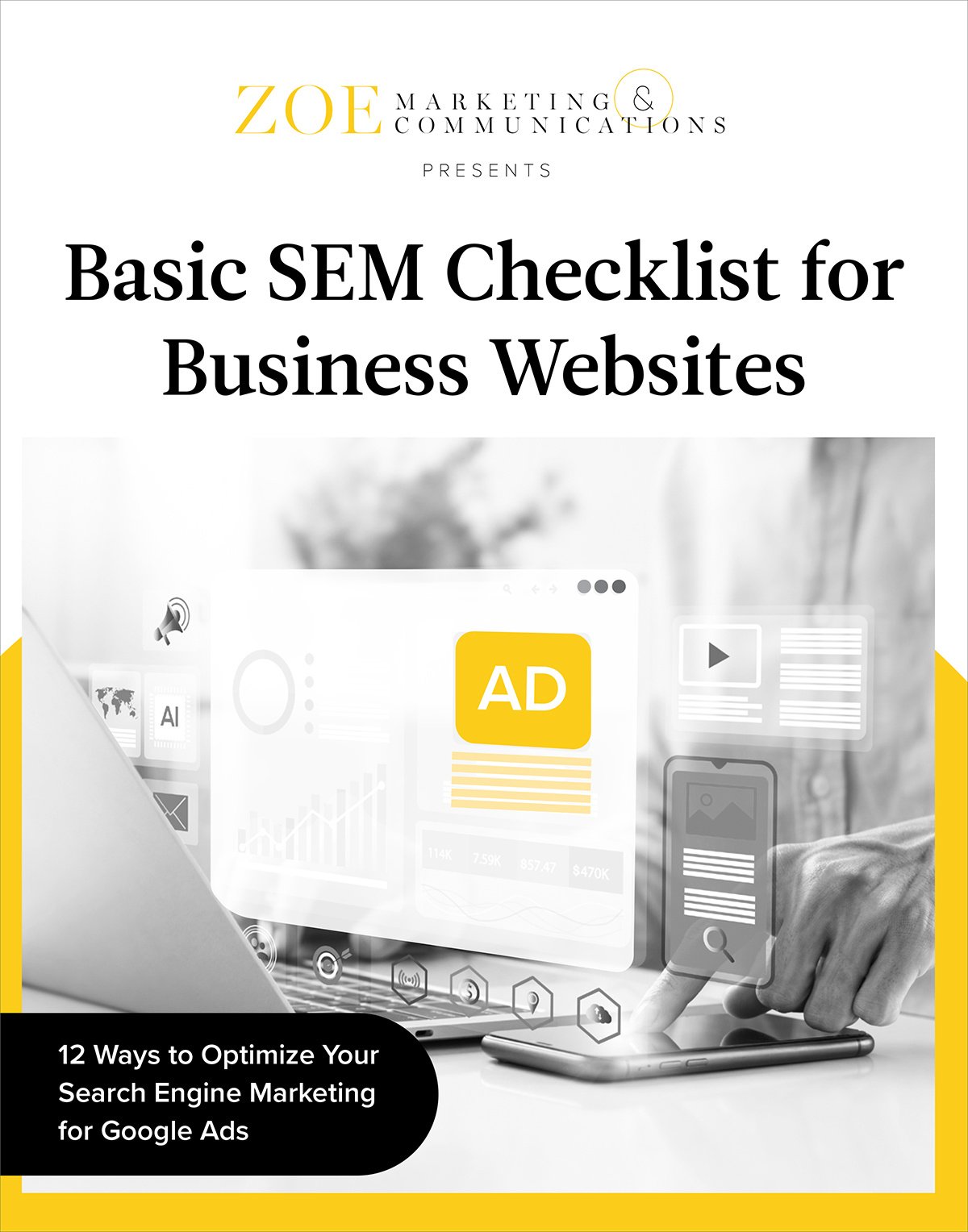
Download Your Basic SEM Guide
Learn how Google Ad Grants can support your nonprofit’s digital strategy, from eligibility to the application process and tips for maximizing yours.
Topics:
June 25th, 2024 | 2 min. read
By Kim Kovelle

Search engine marketing, or SEM, can boost website traffic, target ideal audiences and drive conversions. However, as competition on Google grows, standing out takes effort.
If you’re just getting your bearings, this SEM glossary can help. At Zoe Marketing & Communications, we help businesses like yours build effective SEM campaigns.
Here, you’ll find 21 essential terms explained simply to help you refine or launch your own SEM strategy.
Discover 12 essential steps to optimize your search engine marketing to attract more prospective clients on Google.
SEM uses paid ads on search engines like Google to increase visibility and drive action. Advertisers bid on keywords so their ads appear in search results or on other websites.
Most SEM ads fall into two categories:
Google Ads is the most popular SEM platform, and pricing is typically pay-per-click (PPC) — meaning you only pay when someone clicks your ad.
Comparing two versions of an ad or landing page to see which performs better, helping optimize for conversions.
Extra info in text ads, like a phone number, location or links, making them more useful and improving click rates.

Clusters of related ads and keywords within a campaign, improving organization and targeting.
A score that determines ad placement, based on bid amount, quality score and ad relevance.
How bids are set to optimize clicks, conversions or impressions. Common methods include:
Percentage of ad viewers who click. The average CTR is 3.75%, but varies by industry.

Percentage of clicks that lead to a desired action, like a purchase or form submission. The average CR is 3.76%.
The amount paid for each ad click. The average CPC is $1.27 across industries.
Websites and apps where visual (display) ads appear, expanding reach beyond search results.

Ad targeting based on location, such as city, ZIP code or a set radius.
Terms advertisers bid on so their ads appear when people search those words.
The webpage an ad directs users to, designed for conversions with clear info and calls to action.
Words you exclude to prevent ads from appearing in irrelevant searches, avoiding wasted spend.
SEM’s standard pricing model, where advertisers pay only when an ad is clicked.
Google’s 1-10 rating of ad and landing page relevance. Higher scores improve rankings and lower ad costs.

Showing ads to users who previously visited your site, reminding them to return and take action.
How much revenue ads generate compared to cost. A 4:1 ratio ($4 revenue per $1 spent) is a strong benchmark.
A group of search engines where text ads appear to reach the best audience.
The specific group of users an ad campaign is designed to reach, based on demographics and behaviors.
Basic search ads featuring a headline, description and URL, sometimes with ad extensions.

A small code snippet that tracks user behavior and conversions, enabling better retargeting.
If you want to be found on Google, SEM is a must. This glossary simplifies the key terms so you can confidently approach search engine marketing.
Running effective SEM campaigns takes time. If you need expert support, talk to us. Zoe Marketing & Communications has helped businesses succeed with SEM since 2020.
Meanwhile, deepen your SEM knowledge with:

Learn how Google Ad Grants can support your nonprofit’s digital strategy, from eligibility to the application process and tips for maximizing yours.
As Zoe Marketing & Communications’ content manager, Kim Kovelle brings over 20 years of writing and editing experience in metro Detroit. She has strong roots in community journalism and a knack for making complicated topics make more sense.
Topics:
